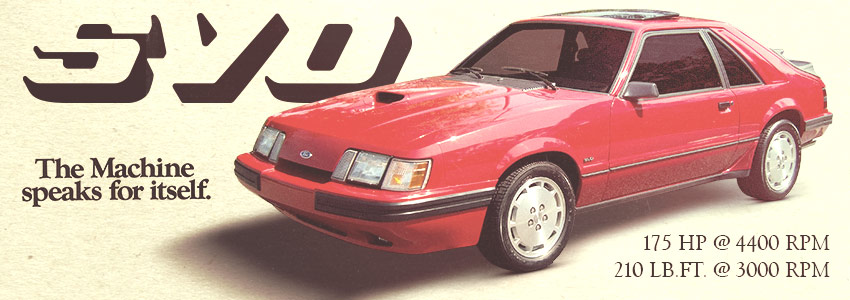
If you don't believe in crystal balls but love the Mustang SVO, you might want to change your opinion on
the unknown. The 1984 Mustang SVO holds a special place in the hearts ofMustang enthusiasts because it
marked the beginning of a new era and it would provide an unequivocal glance into the future of
performance cars in America. It was born out of regulation and raised in the era when performance and
efficiency started to intersect in a way that was unheard of for the time but is seen as normal today.
Sure, it didn't put out bombastic, crazy amounts of power but it did equal it's big brother's
horsepower with a full 2.7L LESS displacement. So, it seems, there really is a replacement
for displacement and the Mustang SVO was on the cutting edge.
This article will cover everything you need to know about the turbocharged 1984-1986 FordMustang SVO,
including the below topics.
Why Regulation Drove
ChangePowertrain Design and Specs Chassis DesignInterior and Exterior Changes
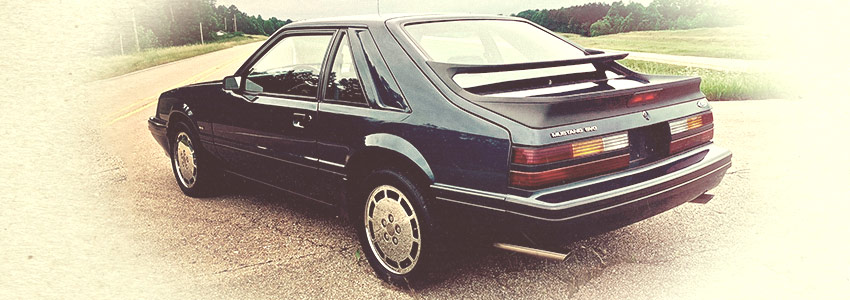
Why Regulation Drove Change In Performance Cars
There were a few major things that really brought the world of performance cars to their knees in the
1970s. First off, the massive oil crisis of 1973 made fuel not only extremely tough to purchase (long
lines at stations were common) but also made fuel extremely expensive. Richard Nixon's creation of the
EPA would also drive home the fact that these ozone belching muscle cars were also no longer fit under
increasingly stringent emissions regulations. The last nail in the coffin was the insurance industry's
war
on muscle cars, led by none other than American safety activist RalphNader. Since muscle cars were
primarily bought by young people, they could no longer afford to run the fuel swilling, expensive to
insure beasts they came to love.
The muscle car was dead.
Ford, like all other American manufacturers, was reeling from the sales death of one of its most popular
and profitable vehicles. In the post muscle car era, Ford struggled with unloved Mustang designs that
offered none of the performance or attitude that theMustang became famous for. More efficient European
cars were becoming increasingly popular in the United States and the men and women at Ford were ready to
go to war.
Enter SVO or Special Vehicles Operation Team, which was formed to do three things:
- Run all Ford motorsports programs
- Expand Ford Racing as a brand and establish a performance parts business
- Produce road cars
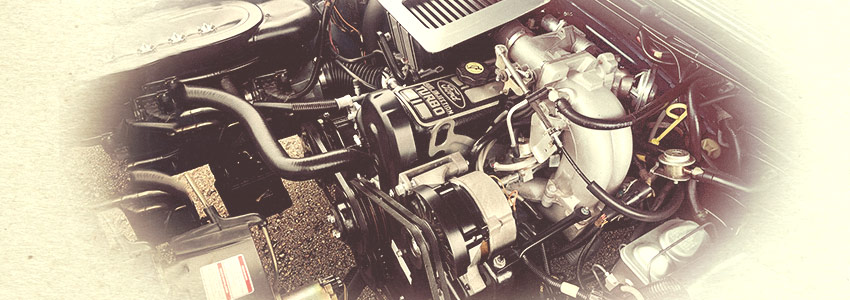
Mustang SVO Powertrain Design and Specs
Under the hood of the Fox Body SVO was not a fire-breathing V8 but a diminutive 2.3L SOHC 4-cylinder that
also did duty in the Mustang II and Pinto. Yes, Ford put a Pinto motor into the legendary Fox Body
Mustang and it worked. Wonderfully. To bump up the power,the engineers from SVO utilized a trick that is
now utilized in everything from CR-V's to BMW's: advanced, computer-controlled fuel injection and
turbocharging. SVO pushed 14lbs of boost to this basic engine to produce 175 horsepower and 210 lb-ft of
torque.This made the 1984 Mustang SVO one of the most powerful American made cars of its day and
cemented SVO as a force to be reckoned with.
A new water cooling system and additional fine-tuning would see a solid bump in power for1985.5 and 1986
models. All SVO Mustangs utilized a Borg Warner 5-speed gearbox.
- Engine
- Type: Turbocharged & Intercooled SOHC I-4
- Displacement: 2.3L / 140 CID
- Bore x Stroke: 96mm x 79.4mm
- Compression: 8.0:1
Mustang SVO Horsepower & Torque Ratings
| Year |
Horsepower |
Torque |
| 1984 |
175 hp @ 4400 rpm |
210 lb.-ft. @ 3000 rpm |
| 1985 |
175 hp @ 4400 rpm |
210 lb.-ft. @ 3000 rpm |
| 1985.5 |
205 hp @ 5000 rpm |
248 lb.-ft. @ 3200 rpm |
| 1986 |
205 hp @ 5000 rpm |
240 lb.-ft. @ 3200 rpm |
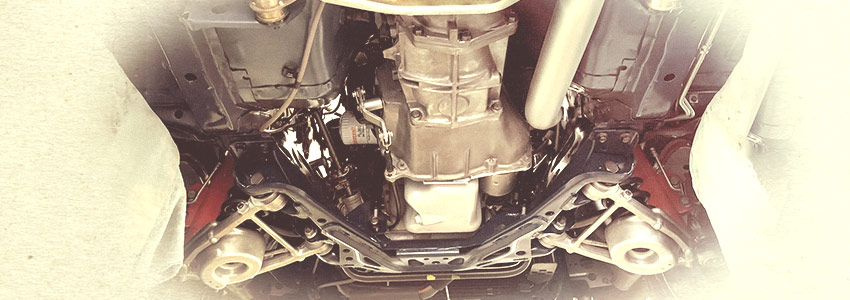
SVO Chassis Design
Sure, that turbocharged powerplant is something to behold but some of the best magic from theSVO was
found underneath the Fox Body. Since the engine in the SVO was much smaller and lighter than the heavy
V8
found in the standard GT, the engineers at SVO were able to move the engine back in the engine bay and
behind the front axle. This had a hugely positive effect on weight distribution and overall chassis
feel.
Ford completely revised the suspension geometry to make the SVO a true handling machine. To match this
revised geometry, SVO also quickened the steering ratio to 15:1 and added in thicker front/rear
anti-roll
bars, a limited-slip “Traction-Lok” differential, fully-adjustable KONI struts/dampers, and meaty 225
series “Gatorback” tires from Goodyear.Bringing things to a halt were upgraded 4-wheel disc brakes that
were pulled from theFox platform-mate Lincoln Continental.
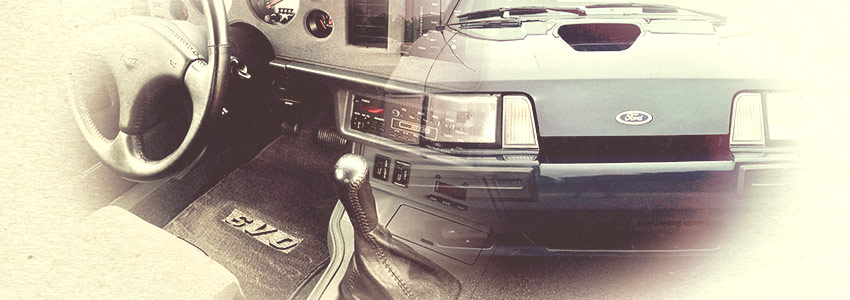
Mustang SVO Interior and Exterior Changes
The SVO Mustang instantly looked the part on both the inside and the outside. A HURST shifter operated
the
5-speed gearbox and Ford even adjusted the pedals for easier heel and toe shifting. Optional leather
adorned the adjustable sport bucket seats and leather was also found on the unique SVO steering wheel
while additions like power windows, door locks also made an appearance on the Mustang. You could even
get
an optional, upgraded stereo system. These features were not typically found on compact American coupes
of the era and were done in an attempt to persuade European brand shoppers over to the BlueOval.
Outside, the uniqueness of this model was even more prevalent with the addition of two iconic styling
elements: the bi-plane rear spoiler and the large, functional hood scoop. These two things instantly set
the SVO apart from standard Mustangs and would go on to define this unique vehicle. Eagle-eyed muscle
car
addicts will also note that the unique taillights also made an appearance on 1993 Cobra - a distant
cousin of the SVO.
Mustang SVO: The Numbers
| Vehicle Specification |
Statistic |
|
Suspension |
| Front |
Independent, KONI adjustable struts, coil springs, 30.5-mm anti-rollbar |
| Rear |
Solid axle, four trailing links, two leading hydraulic links, KONI adjustable shocks, coil
springs, 17-mm anti-roll bar |
|
Brakes |
| Front |
10.9 in. vented disc |
| Rear |
11.25 in. vented disc |
| ABS |
N/A |
|
Wheels/Tires |
| Wheels |
16 x 7 in 5-lug aluminum |
| Tires |
225/50VR16 Goodyear |
|
Performance |
| 0-60 MPH |
7.7 seconds |
| 60-0 MPH Braking |
158 feet |
| 1/4-mile @ MPH |
15.8 sec @ 89 mph |
| US
Market Cars |
| Black |
1,389 |
| Dark Charcoal Metallic |
1,023 |
| Medium Canyon Red Metallic |
984 |
| Silver Metallic |
865 |
| Oxford White |
1 |
| No Paint Code |
1 |
| Total Produced |
4,263 |
|
Canada Market Cars |
| Silver Metallic |
100 |
| Black |
57 |
| Dark Charcoal Metallic |
35 |
| Medium Canyon Red Metallic |
30 |
| Total Produced |
222 |
|
Export-DSO Market Cars |
| Silver Metallic |
10 |
| Medium Canyon Red Metallic |
7 |
| Dark Charcoal Metallic |
5 |
| Black |
1 |
| Total Produced |
23 |
Note: The best effort was made to reference accurate information for this
article. As some of this data is more than 40-years old,there may be small discrepancies among
available sources of Mustang engine information.
Source: Ford | Ford Performance | Mustang Specs | Mustang Lab | Bring
A Trailer
Related Articles









